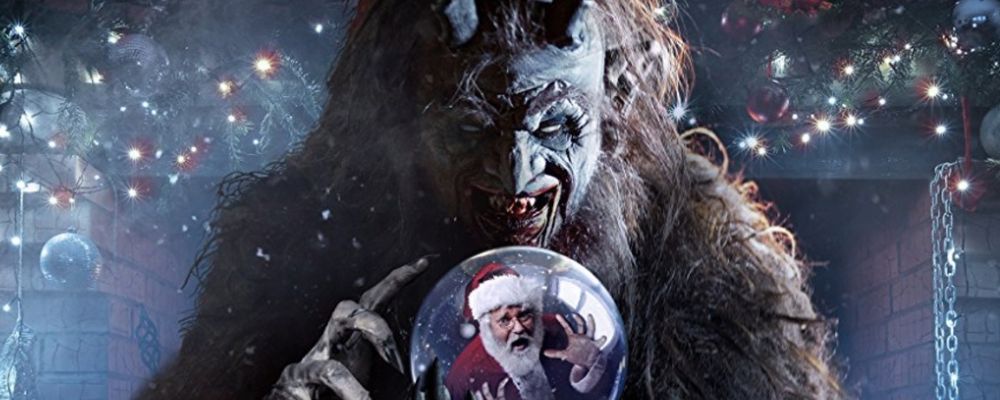
While the Vikings did not celebrate Christmas, the end of the year when the nights were at their longest, darkest, and coldest, was an important time of year. It was marked with a 12-day festival called Yule (or Jul). When Scandinavian countries converted to Christianity, many Yule traditions were transformed into Christmas traditions. We’ve previously written about this on the blog here.
One important difference between Christmas and Yule is that Yule was considered a much darker time. The nights were dark and dangerous, and the Norsemen believed that it was at this time that the veil between worlds was thin and that spirits and supernatural beings could crossover and cause mischief.
This element of danger finds its way into Norse folklore about Christmas. Let’s take a look at a few of the dark Norse stories about Christmas.
Krampus
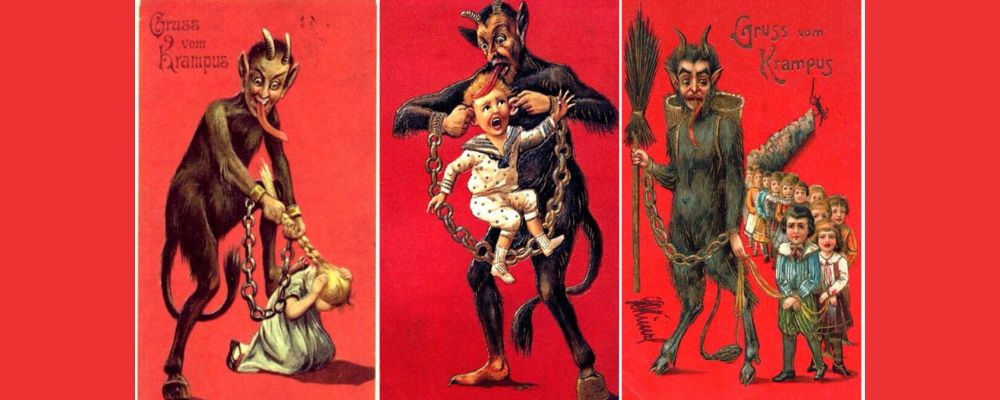
Thanks to the popular horror movie, Krampus is probably one of the best-known Norse Christmas monsters. I say Norse, even though the modern story of Krampus comes mostly from Germany and Austria. But the myth claims that Krampus is the son of the Norse goddess Hel, herself the daughter of Loki, and the queen of the underworld.
Krampus is a beast with a mangled and deranged face, large bloodshot eyes, and the furry body of a beast. He has large curling horns and is half goat and half demon. He accompanies the more benevolent character of St Nicolas as he visits homes on December 5 and distributes presents to well-behaved children.
Krampus deals with the badly behaved children. He either beats them with a birch branch or shoves them in a sack and kidnaps them to later torture and kill them.
In modern day Austria you can see the Krampus in street festivals called, where men dress up as the beast and playfully chase people. This show is meant to scare off real demons.
Glamr the Draugr
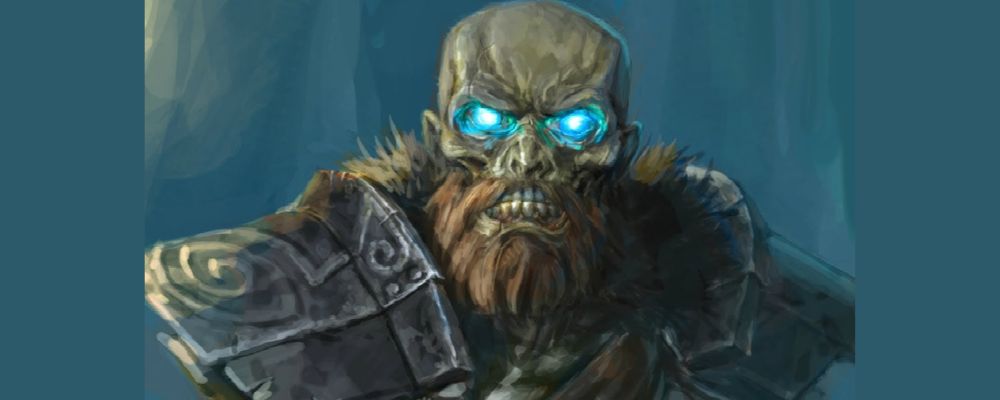
Draugr, which are kind of like zombie-vampires, also feature in Norse Christmas tales. It was believed that men who were wicked in life might not properly pass over and instead become Draugr of “after walkers”.
They had grotesque features, including blue skin and eyes, and they had superhuman strength which allowed them to terrorize communities. Just seeing one could send someone mad. When the Norsemen suspected that a Draugr was at work, they would sometimes dig up the recently deceased and either stab their corpse or place a sword across its neck, so if the body tried to rise, it would become beheaded.
Grettis Saga tells the story of a Christmas Draugr. He is a Swedish herdsman named Glamr who disrespects Yule traditions. This starts with him demanding that his wife bring him food for Yuletide Eve. She reminds him that good Christian men do not eat meat on this night and that he should be fasting. Glamr responds that customs were better when men were considered heathens and goes on to eat his meal.
He then ignores a warning to avoid a known haunted region during Yule. He travels out there and is never seen again. Assumed dead, the townsfolk tried to retrieve his body, but could not find it. They assume that this was because he was killed by an evil spirit.
But that is not the end of it, as Glamr comes back as a Draugr, and many people go mad just as a result of looking at him. He also causes great mischief, including jumping on and destroying people’s homes.
Glamr is eventually killed by the hero Grettir, but at great personal cost. Glamr curses him to eternally afraid of the dark, and he is haunted for the rest of his days by Glamr’s burning red demonic eyes.
Gryla
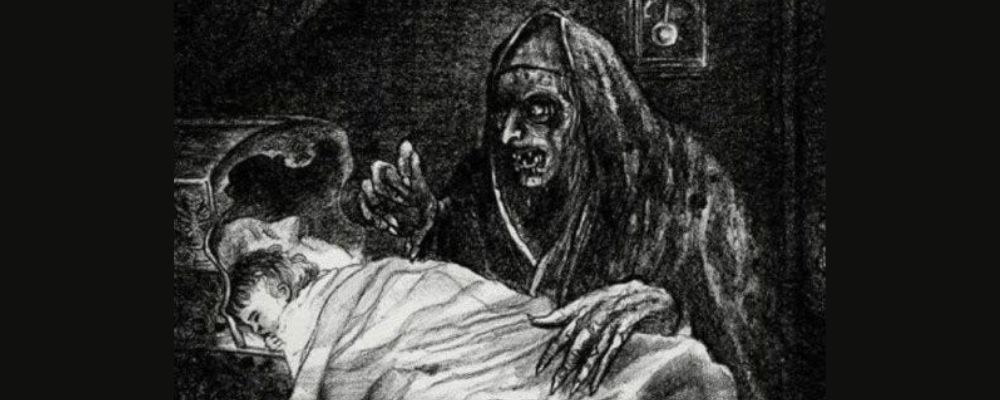
Gryla is a troll woman mentioned in 13th century Icelandic texts, including the Islendinga Saga and the Sverris Saga, but not in association with Christmas. This seems to have emerged in the 17th century.
In the oldest stories she is described as a vagrant woman who asks people to give her their mischievous children to be eaten. She is eventually driven out of the community and into the wilds. In the 17th century she was a troll that lives in the mountains but descends on the villages every Christmas. She loves the taste of human flesh and kidnaps misbehaving children to cook and eat.
She is joined in this activity by her 13 prankster sons. They each show up on a different day starting 13 days before Christmas, and stay for 13 days each, so they are around from the 12th of December until the 6th of January. Each has a name that describes the way that they like to make mischief.
- Stekkjarstaur means “Sheep-Cote Clod” and he makes trouble by harassing herds of sheep.
- Giljagaur means “Gully Gawk” and he hides in gullies and steals milk.
- Stufur means “Stubby” and he is abnormally short and steals pans to eat the crusts left behind.
- Thvorusleikir means “Spoon-Licker” and he steals and licks wooden spoons. He is thought to be very skinny since this is not a very good form of sustenance.
- Pottaskefill means “Pot-Scraper” and he steals the leftovers from pots.
- Askasleikir means “Bowl Licker” and he hides under beds and waits for people to put down their bowl so he can steal it.
- Hurdaskeller means “Door-Slammer” and he slams doors especially at night to wake people up.
- Skyrgamur means “Sky-Gobbler” and he steals skyr, which is like yogurt.
- Bjugnakreakir means “Sausage Swiper” and he hides in the rafters and snatches sausages that are being smoked.
- Gluggagaegir means “Window-Peeper” and he looks through windows in search of things to steal.
- Gattathefur means “Doorway-Sniffer” and he has an unusually large nose and uses his sense of smell to locate leaf bread.
- Ketkorkur means “Meat-Hook” and he uses a hook to steal meat.
- Kertasnikir means “Candle-Stealer” and he follows children to steal their candles.
They sound like a line up of potentially hilarious horror movie villains. But while they might not seem like serious characters, they were also thought to hurt or kidnap children if they misbehaved. They certainly seem to represent a darker version of Santa’s naughty or nice list.
A Very Nordic Christmas
What do you think of these darker Norse Christmas stories? Should they make a comeback in modern traditions? Should we return to the idea that the dead of winter represented a time when spirits could pass between worlds and that these spirits could be benevolent or malevolent ?
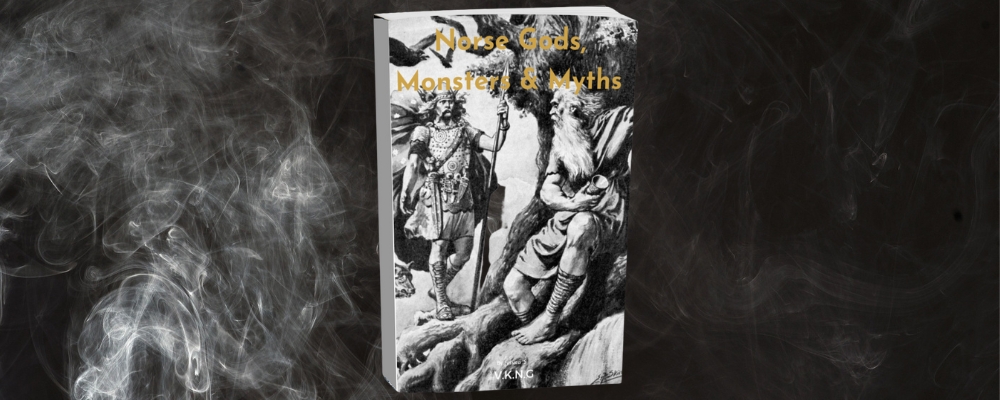
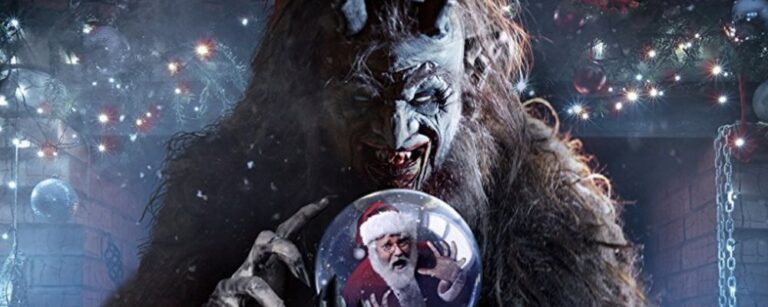







Thank you for sharing I really like the krampus I watch them on YouTube and fell in love with them